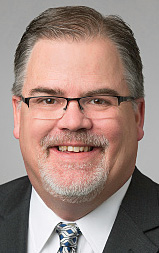

DNS |
Sponsored by |

|
 I was a witness at the two prior hearing, one in 2001 and another in 2002 - it's quite an experience.
I was a witness at the two prior hearing, one in 2001 and another in 2002 - it's quite an experience.
My submission to this year's hearing is online at http://www.cavebear.com/rw/senate-july-31-2003.htm
What's going to be said by the witnesses? I don't know. But I have some guesses...
Later today, Senator Conrad Burns, who chairs the U.S. Senate subcommittee responsible for supervising ICANN, will be holding a hearing on a number of issues.
At the beginning of the year, a press release called "Burns Unveils NexGenTen Agenda For Communications Reform and Security in the 21st Century", had reported:
"U.S. Sen. Conrad Burns (R-Mont.) announced his top priorities for his chairmanship of the Senate Communications Subcommittee during the 108th legislative session. The ten items, called the Burns NexGenTen Tech Agenda, aim to strengthen security and usher reform for 21st Century Communication...
When domain names expire they leave skeletons - networks of inbound links that continue to funnel traffic to that name, even if ownership has changed. Via eWeek, we learn that Microsoft owned HARDWARE-UPDATE.COM and used the name for a site featuring Windows drivers. The domain name is embedded in various error messages in Windows 2000. However, Microsoft did not renew the domain name and Ultimate Search, a company that specializes in this sort of thing, scooped it up. Now the page provides sponsored links, courtesy of Overture. The article reports that the top sponsored link pays over $3 a click-through.
Should ICANN's Wait-Listing Service be implemented?
Why yes or why not? What are the negative or positive consequences that are being overlooked?
In light of the recent events regarding ICANN's approval of the Wait-Listing Service (WLS), CircleID is requesting all stakeholders (all individuals or organization that own domain names or sell related services) to submit their comments 'for' or 'against' WLS. All comments gathered will be posted on CircleID WLS Speical Coverage and presented to key decision makers...
 At a workshop held in late June in Montreal (Canada) -- Karl Auerbach had submitted some live coverage to CircleID --, the Internet Corporation for Assigned Names and Numbers (ICANN) had an in-depth look at various aspects of the Internet's WHOIS databases. These databases associate social information (like holders' names and contact information) with network identifiers, such as IP addresses and domain names. Current policy for these databases -- in particular in the generic top level domain area -- is part of ICANN's contracts with domain name retailers ("registrars") and database operators ("registries"), and permits for use of the data by arbitrary parties for arbitrary purposes.
At a workshop held in late June in Montreal (Canada) -- Karl Auerbach had submitted some live coverage to CircleID --, the Internet Corporation for Assigned Names and Numbers (ICANN) had an in-depth look at various aspects of the Internet's WHOIS databases. These databases associate social information (like holders' names and contact information) with network identifiers, such as IP addresses and domain names. Current policy for these databases -- in particular in the generic top level domain area -- is part of ICANN's contracts with domain name retailers ("registrars") and database operators ("registries"), and permits for use of the data by arbitrary parties for arbitrary purposes.
Part of the stated reason for the high price point stated by Verisign was to "deter domain speculators" with a price that was high. If the price was set at $1, they claim, speculators would buy all the WLS subscriptions before any other people. So if Verisign is trying to really deter domain speculators then why are they not releasing information on who owns a WLS? Or limiting the number of WLS that a person can have. Seems like a shallow argument if the only deterring thing is raising more money for the Verisign monopoly rather than setting limits...
Right now a person invents and registers a domain and must pay a yearly fee to a registrar (that registrar is supposed to have the right to compete). The registrar then has to pay their competitor (the registry Verisign monopoly) $6 as agreed to by ICANN and the Dept of Commerce. This would be fair so far if there was not a monopoly on the back end Registry. Each registrar does in fact get to play in this scenario. Now if the registrant chooses not to renew their domain after it expires the name ceases to exist by default, since it's not legal if unpaid. THERE IS NO SCENARIO WHEREIN THE GOVERNMENT EVER CONTEMPLATED VERISIGN OWNING OR CONTROLLING THIS DOMAIN INVENTED BY A COMMON CONSUMER, ONCE EXPIRED, AS THE WLS ATTEMPTS.
 In 2002, VeriSign, the registry for .COM and .NET domain names, proposed the idea of a centralized, registry-level "wait list" for currently registered domain names. The system would let anyone around the world get "next in line" for a name that is registered now but may become available later.
In 2002, VeriSign, the registry for .COM and .NET domain names, proposed the idea of a centralized, registry-level "wait list" for currently registered domain names. The system would let anyone around the world get "next in line" for a name that is registered now but may become available later.
This new registry service, titled Wait List System (or WLS), would augment what is now an ad-hoc group of registrar-level services that are useful, but aren't always fully dependable or even available to the general public.
 I will try and take a different approach with this post. There are two elements of WLS that I think are most material and are not discussed often enough. They are i) the scope of the original NSI-ICANN contract and ii) the use of multiple accreditations.
I will try and take a different approach with this post. There are two elements of WLS that I think are most material and are not discussed often enough. They are i) the scope of the original NSI-ICANN contract and ii) the use of multiple accreditations.
...Verisign is paid a sum of money to perform a service. They own neither the primary nor the secondary data. I will not bore you with a recitation of various sections of the agreement nor with long-winded legal arguments. They are for another forum. The implication of this conclusion as it relates to WLS is that any re-registration market service is outside the scope of the original contract and should be treated as any new service should.
 When I came out of the Verisign Product Round-Table at the ICANN Meeting it became clearer to me why I sometimes feel that registries were dangerous things to put in the hands of a for-profit corporation. Here in Canada the .CA namespace is regarded as a "Key Public Resource", thus the registry is administered by a non-profit corporation. The monopoly over the root (which is what it is) is treated very carefully, almost with a "necessary evil" mentality, which if done properly cultivates private enterprise and competition at the registrar level, where it should be.
When I came out of the Verisign Product Round-Table at the ICANN Meeting it became clearer to me why I sometimes feel that registries were dangerous things to put in the hands of a for-profit corporation. Here in Canada the .CA namespace is regarded as a "Key Public Resource", thus the registry is administered by a non-profit corporation. The monopoly over the root (which is what it is) is treated very carefully, almost with a "necessary evil" mentality, which if done properly cultivates private enterprise and competition at the registrar level, where it should be.